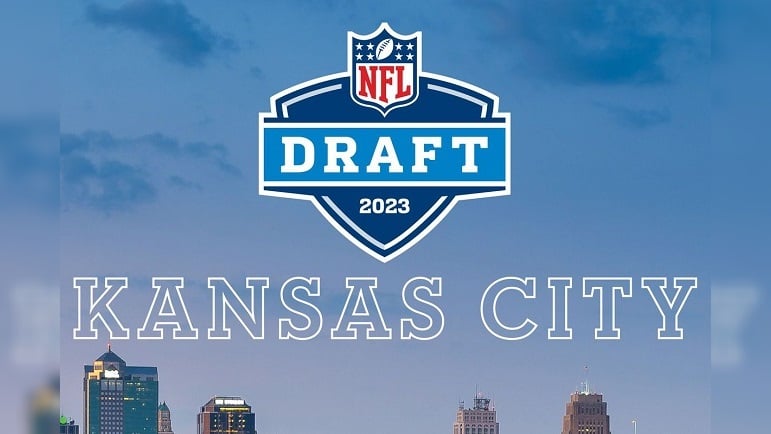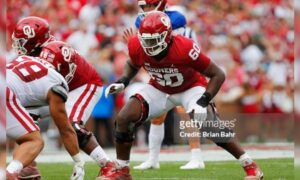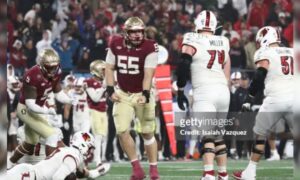Everyone who follows the NFL draft sees a lot of debate about whether a Prospect ABC is “worth” a given pick. But what does that really mean? Let me rephrase it into a form that we can take apart:
“I have a standard for what I expect of a Round X pick, and when I compare this prospect to that standard he falls [ahead/at/behind] that mark.”
There are two sides to that; evaluating the player’s skills and potential, and then the comparison. The second may cause more kerfuffle than the first, because I’ve come to believe that people may think they have a standard in mind for Round X, but in fact that so-called “measuring stick” will often change according to our subconscious desires.
This article aims to fix that by helping you – you, not me – to define what you expect to see from a pick in the 1st, 2nd, 3rd, or 4th round of the upcoming draft. We won’t all agree, but we can at least learn to be consistent.
What follows is a list of the Steelers draft picks from 2010 to date. Call it a dozen years unless you want to add in the 2022 picks as well. The list is limited to Rounds 1-4, and is roughly organized according to my personal valuation of the players in question, with each cluster consisting of players who provided roughly similar value. That order is not “right,” it is only mine, and we will start by making it yours.
Step #1. Move players up or down each list until it matches your own, personal take. Your take, not mine.
Step #2. Once you have that list – your list, not mine – look it over as a whole. I will argue that Pittsburgh does a darned solid job of getting value in the earlier rounds, and that the value goes down as the draft moves on. Do you agree? It may seem obvious, but there really are people out there who say, “Every draft pick is nothing but a random throw of the dart, so trade down as much as you can to get the most darts.” This pattern (if you concur) refutes that. There are exceptions, but on average a higher pick will yield a better player.
Step #3. Determine what is good, fair, or poor value for each of those rounds.
- Cut off the 2-3 exceptions at the top and bottom of a given round in order to eliminate the exceptional cases that throw off the curve. Remember: You organized the list, so it’s on you to say what counts as an exception in either direction.
- Look at what’s left in the top tier of each given round. That is your personal definition of a very good draft pick in this round. Your definition, not mine or some expert’s.
- Look at the names in the middle of each round. That’s your definition of the range from “good” to “not bad” value for this round. Yours and no one else’s.
- Finally, look at the names on the bottom of each round. Those are the disappointments, again according to you.
We now have a list of booms, very good, good, not bad, poor, and busts for each of the four rounds, as set by you. You and no one else. (The booms and busts being those curve-throwing exceptions you cut out).
Step #4. Double check your evaluations until you feel comfortable.
“But Scott, how am I supposed to decide which player turned out better or worse than the other players?” You’ve got eyeballs, and every fan has opinions. Use them. We’re digging down to uncover your personal standards, not some objective, capital-letter Truth. But I, for one, do not trust my hunches and impressions without double checking to see if they make sense. I do that as follows.
We can all agree that a player’s “value” comes from how much he adds to his unit and team as a whole, not in any particular set of stats, and needs to be measured over the course of an entire season or contract. The more snaps you play, the better; and the more you contribute to the offense or defense, the more that snap should count. Same in reverse if you contribute less. In other words, “value” is a function of both Quantity and Quality.
So take your opinion on how much each of the player’s snaps helped to his unit (your opinion, not anyone else’s), and then multiply it by the the number of total snaps (an easily available stat). Average contributions = 1.0. Great contributions could be 10% better than the other players (x 1.1) half-again (x 1.5), double the benefit (x 2.0), or even ten times as much (x 10.0). It is up to you! Poor contributions might be only 90% (x0.90), 50% (0.50), or 10% (0.10) as good for the unit as a whole. You could even give “more important” positions (in your view, not anyone else’s) a bounce upward for hidden contributions, or “lower value” positions a knock. It’s all about who helps more according to your personal grades. Again, you cannot be wrong because this is just an organized way to double check your own opinions.
With any luck your holistic “impression” grades and your semi-objective “per snap value” grades will match closely enough for you to feel confident that those are your real beliefs. If they don’t match, think about why and then go with your initial impression. (But do let us know in the comments, because that would be a good discussion all on its own.)
| STEELERS ROUND 1-4 DRAFT PICKS, 2010-DATE | |||
| Organized by my personal valuations and clusters. Correct the order as you see fit | |||
| Round 1 picks | Round 2 picks | Round 3 picks | Round 4 picks |
| OLB T.J. Watt
OC Maurkice Pouncey DT Cam Heyward ILB Ryan Shazier OG David DeCastro
OLB Bud Dupree RB Najee Harris SAF Terrell Edmunds
OLB Jarvis Jones CB Artie Burns ILB Devin Bush |
Stephon Tuitt
Le’Veon Bell Marcus Gilbert
OLB Jason Worilds TE Pat Freiermuth WR Diontae Johnson [FN1]
WR Juju Smith-Schuster
WR Chase Claypool WR James Washington
SAF Sean Davis OT Mike Adams
N/A. Senquez Golson [FN2] |
NT Javon Hargrave
CB Cam Sutton
WR Emmanuel Sanders OT Chuks Okorafor WR Markus Wheaton RB James Conner
ILB Sean Spence QB Mason Rudolph WR Sammie Coates
CB Curtis Brown OC Kendrick Green DB Justin Layne WR Dri Archer
|
WR Martavis Bryant
OT Dan Moore Jr. CB Cortez Allen RB Benny Snell
QB Josh Dobbs QB Landry Jones CB Shamarko Thomas CB Doran Grant OT Jerald Hawkins ILB Buddy Johnson
NT Ta’amu Alameda DT Thaddeus Gibson
|
| 2022 = QB Kenny Pickett | 2022 = WR George Pickens | 2022 = DL DeMarvin Leal | 2022 = WR Calvin Austin III |
- [FN1] Diontae Johnson was technically a 3rd Round pick, but a 3:02 because he came via trade. There was no actual 2nd that year.
- [FN2] Senquez Golson never played due to an unforeseeable injury, so that pick cannot be valued.
- A final note in the spirit of self-defense: I treat my clusters as basically equal within each, do not account for careers shortened by injury (Shazier and Coates in particular), and want to remind everyone that they aren’t the point of the exercise. You are supposed to move everything around to match your personal take. Mine should be seen as just one example.
CONCLUSION
I am not, Not, NOT telling you what to think with this. That isn’t the goal. We’re trying to dig down to your personal standard for saying what we should expect, hope for, and settle for in a Round X pick. Your expectations, not anyone else’s. People will undoubtedly hold you to that standard as we debate whether this ILB or that TE is “worth” a given pick, but that’s only fair since it’s your standard to begin with. No one needs to be right, but we should all be consistent. Indeed, I really hope that people will do just that! And I will be eagerly awaiting comments along these lines: “Do you really think this guy will help the team as much as other Round X picks like A, B, and C ? Pavelle gave us the list of picks back in that legendary article from January.
Now that would be getting it capital-R Right. [Ducks head modestly].
I learned a lot about my own views from writing this piece. I hope it proves just as valuable to you. Let me know down below, including any particular insights or complaints about the method.








